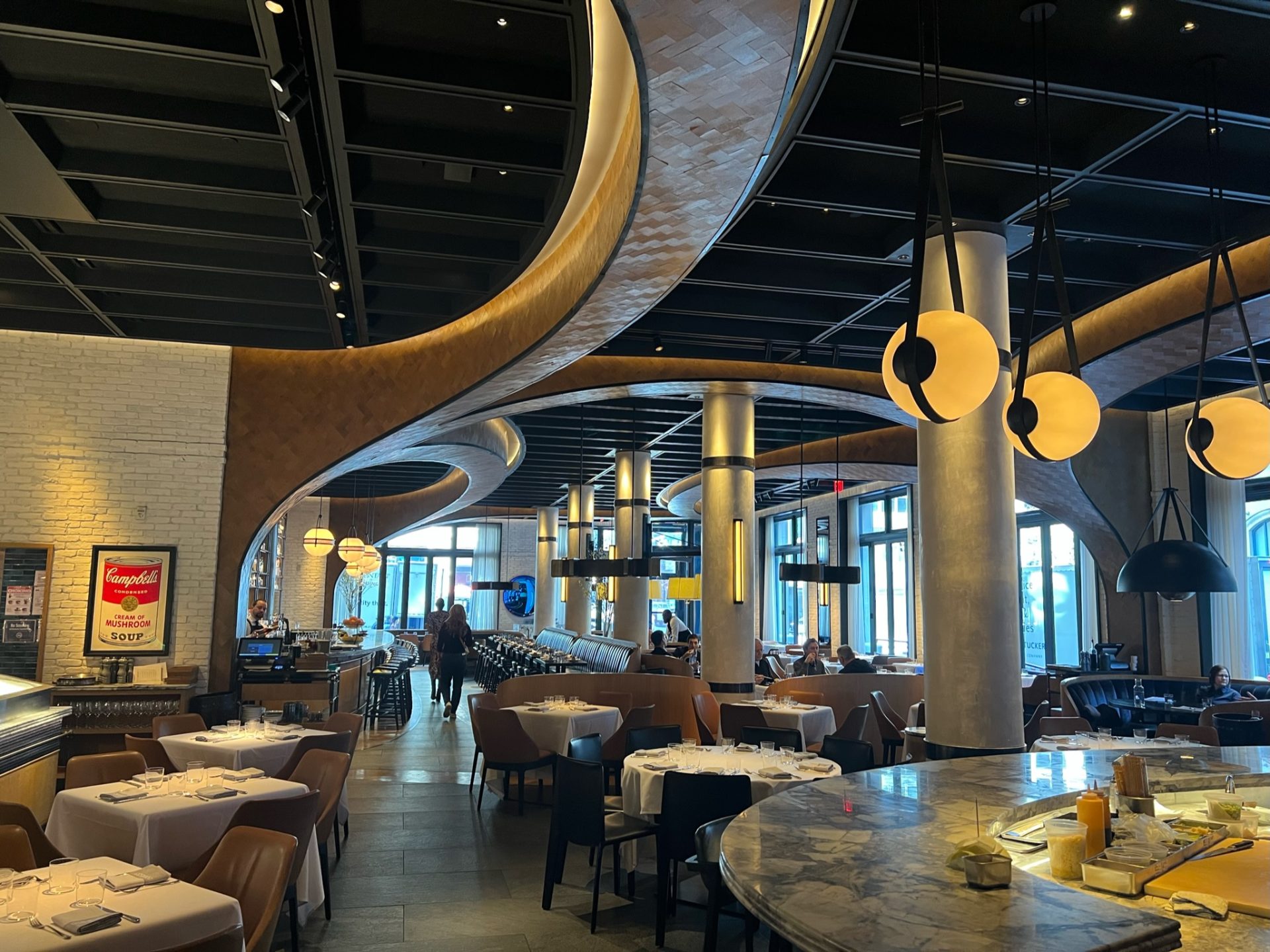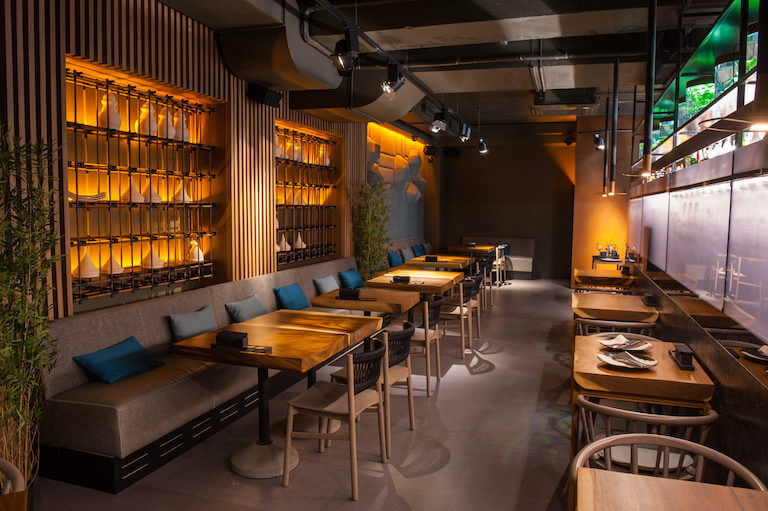Fine Dining Experience Islamabad: Delight In Extravagant Cooking Pleasures
Wiki Article
Savor Authentic Oriental Cuisine With a Pan-Asian Twist for a Culinary Adventure
Embarking on a cooking trip through genuine Asian cuisine, boosted with a Pan-Asian twist, provides a distinct possibility to check out the rich tapestry of tastes that define the region's diverse cooking customs. As you ponder these tempting meals, consider the cultural stories and historical influences that form them, each bite using a story waiting to be uncovered. Best ambiance restaurants Islamabad.
Exploring Pan-Asian Tastes
In the world of international gastronomy, Pan-Asian cuisine attracts attention for its remarkable variety and the harmonious interaction of tastes from various Oriental cultures. This culinary strategy celebrates the abundant practices and unique active ingredients found across the continent, developing a tapestry of preferences that is both rewarding and fascinating. Key to Pan-Asian cuisine is its capability to stabilize contrasting flavors-- sweet, salty, spicy, and sour-- while highlighting the freshness and top quality of each component.From the umami-rich soy sauce of Japan to the intense chili peppers of Thailand, Pan-Asian cuisine offers a considerable palette of flavors. These elements are frequently incorporated in creative means, boosting recipes with layers of complexity. As an example, using aromatic herbs such as lemongrass and cilantro, common in Vietnamese and Thai cuisine, adds a refreshing brightness to dishes, while the consolidation of coconut milk supplies a luscious, abundant appearance.
The focus on fresh produce and aromatic spices ensures that each meal is not just a banquet for the preference buds but also for the senses. Pan-Asian cuisine welcomes restaurants to start a cooking trip, checking out the large and varied landscapes of Asian gastronomy with every bite.
Fusion Dishes to Attempt
While Pan-Asian cuisine is commemorated for its standard flavors, the contemporary cooking landscape is progressively embracing blend dishes that blend these timeless elements with impacts from other areas. This cutting-edge method not just honors the rich heritage of Oriental cooking arts but likewise presents novel taste experiences that appeal to modern tastes.
A prime example of such a blend dish is the Korean-Mexican taco, where marinaded bulgogi beef is covered in a cozy tortilla, topped with kimchi and a hot gochujang-infused salsa. This mix weds the strong, mouthwatering tastes of Korea with the dynamic, fresh aspects of Mexican food. In a similar way, sushi burritos have obtained popularity, integrating the delicate creativity of Japanese sushi with the hearty, hand-held benefit of a burrito, frequently featuring fusion components like tempura shrimp and avocado with a drizzle of wasabi mayo.
An additional noteworthy dish is Thai curry ramen, which infuses the creamy, aromatic seasonings of Thai curry right into the soothing brew of typical Japanese ramen, developing a harmonious blend that tantalizes the senses. These fusion dishes expand past plain uniqueness; they stand for a cooking discussion in between societies, motivating exploration and technology in the world of Pan-Asian cuisine.
Vital Components and Flavors
To genuinely value Pan-Asian food, one need to comprehend the vital components and seasonings that develop its foundation. This diverse cooking design attracts from an abundant tapestry of Oriental traditions, using an unified mix of textures and tastes. Key active ingredients include soy sauce, fish sauce, and oyster sauce, which present a full-flavored umami depth necessary to Oriental dishes. Complementary to these are rice vinegar and mirin, lending a fragile acidity and sweet taste.Fragrant elements are crucial, with lemongrass, ginger, and garlic being common throughout various Pan-Asian dishes. These active ingredients offer a fragrant base that boosts the complexity of tastes. Spices such as star anise, cardamom, and cinnamon present warmth and personality, echoing influences from areas like China and India.

Cooking Techniques and Tips
Understanding the art of Pan-Asian food requires familiarity with its distinct food preparation strategies, each adding to the vibrant tapestry of flavors this culinary custom is celebrated for. Central to these approaches is the stir-fry, a quick food preparation strategy that preserves the nutritional integrity and vivid shades of ingredients. Using a wok, the stir-fry approach permits for also heat distribution, crucial for achieving the particular appearance and flavor balance of Pan-Asian recipes.An additional essential method is steaming, especially widespread in Chinese food. This gentle method keeps the all-natural flavors and nutrients of ingredients, making it ideal for fish and shellfish and vegetables. Dumplings, a beloved staple, frequently take advantage of steaming, resulting in soft, delicious structures.
Grilling, best asian restaurant Islamabad also integral, presents great smoky depths to recipes such as Korean bulgogi or Japanese yakitori (Chinese food Islamabad). This technique usually includes marinating active ingredients, permitting tastes to penetrate deeply prior to food preparation over an open fire or hot plate
Finally, understanding the art of balancing tastes-- wonderful, sour, salted, bitter, and umami-- is vital. Correctly layering these components can elevate a recipe from common to extraordinary, using a complex and satisfying cooking experience that embodies the significance of Pan-Asian food.
Dining Experiences Worldwide
Around the world, Pan-Asian cuisine uses an unequaled eating experience, celebrated for its abundant tapestry of tastes and dynamic discussions. This culinary phenomenon has actually transcended cultural borders, capturing the hearts and tastes of food lovers worldwide. In worldwide cities like New York, London, and Sydney, Pan-Asian restaurants work as fusions where cooking traditions from Thailand, Japan, China, and past converge, supplying restaurants with an eclectic mix of dishes that highlight the region's diversity.The global allure of Pan-Asian food hinges on its ability to supply both authenticity and innovation. Chefs skillfully wed traditional components such as lemongrass, soy sauce, and miso with modern strategies, leading to meals that are both refreshingly brand-new and acquainted. This combination permits restaurants to start a culinary journey that respects heritage while welcoming modernity.
Additionally, eating experiences are raised via thoughtfully created atmospheres that mirror the principles of Pan-Asian visual appeals. From minimalist Japanese-inspired interiors to dynamic Thai-themed rooms, each dining establishment supplies an unique ambiance that matches the cooking offerings. As an outcome, customers are not just taking in a meal yet partaking in a social experience, making Pan-Asian eating a really international sensation.
Conclusion
The expedition of Pan-Asian cuisine uses an extensive understanding of the complex interaction of tastes and cooking practices across Asia. By embracing combination meals such as Thai curry ramen and sushi burritos, the cooking trip not just highlights the versatility of typical ingredients yet additionally showcases ingenious modern-day strategies. This gastronomic adventure, enriched by important flavors and cooking approaches, provides a distinct chance to appreciate the social variety and cooking artistry that define Pan-Asian cuisine on a global scale.Beginning on a culinary journey through genuine Eastern food, boosted with a Pan-Asian twist, provides a special possibility to explore the rich tapestry of flavors that specify the region's varied cooking customs.In the world of worldwide gastronomy, Pan-Asian cuisine stands out for its remarkable variety and the unified interaction of flavors from different Oriental societies. Trick to Pan-Asian cuisine is its capacity to balance contrasting flavors-- wonderful, salty, spicy, and sour-- while highlighting the quality and high quality of each component.

Report this wiki page